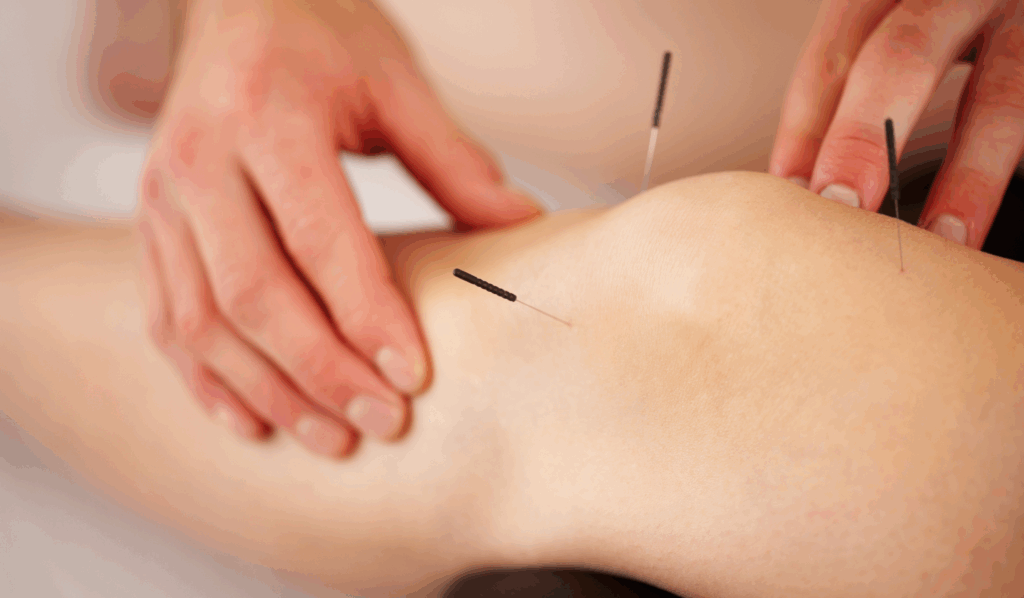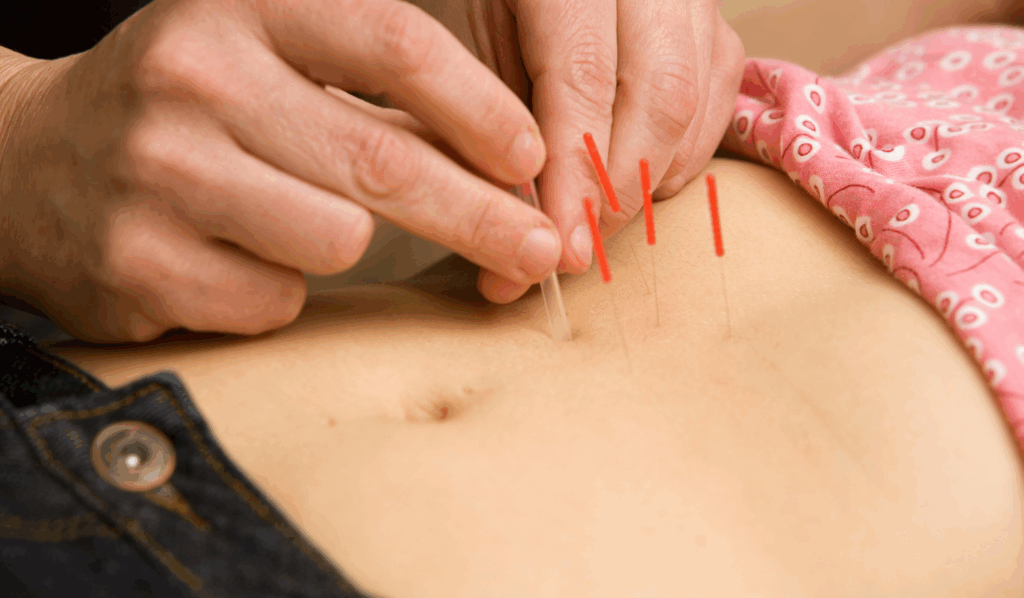The idea of tiny needles piercing the skin can feel daunting for anyone unfamiliar with acupuncture. But what if these delicate tools weren’t a source of discomfort, but instead a bridge to balance and healing? Acupuncture, a cornerstone of Traditional Chinese Medicine, works by stimulating the body’s natural energy pathways, offering relief from pain, stress, and a host of other ailments. At the heart of this transformative practice lies a simple question many first-timers ask: How deep do the needles go?
The depth of acupuncture needle insertion depends on the location of the point and the purpose of the treatment. Needles are typically inserted at depths ranging from 0.25 inches to 2 inches. Shallower insertions, such as 0.25 to 0.5 inches, are used for sensitive areas like the face and neck, while deeper insertions, up to 2 inches, are reserved for muscular regions like the back or thighs. Practitioners carefully adjust the depth based on the treatment goals and the patient’s unique anatomy. This thoughtful precision ensures both safety and effectiveness, making acupuncture a truly personalized path to healing.
Factors Influencing the Depth of Acupuncture Needle Insertion
Several factors determine how deep acupuncture needles go:
Location of the Acupuncture Point
Bony Areas:
Points near bones, such as the wrists, knees, or shins, require shallow insertion to avoid discomfort.
Muscular or Fatty Areas:
Areas with thicker muscles or more subcutaneous fat, like the thighs, glutes, or abdomen, often allow for deeper needle placement.
Face and Neck:
Points in delicate areas, such as the face or neck, require very shallow insertions due to the proximity of sensitive structures.
Condition Being Treated
The depth of needle insertion is closely tied to the therapeutic goal.
Shallow Insertions:
Used for surface-level issues such as stress, anxiety, or cosmetic treatments.
Deeper Insertions:
Necessary for conditions like chronic pain, muscular tension, or organ imbalances where deeper meridians must be accessed.
Patient’s Physical Build
Every individual has unique anatomical features, such as skin thickness, muscle density, and fat distribution. Practitioners consider these factors to adjust the depth of insertion for optimal effectiveness while ensuring patient comfort.
Exploring Different Depths of Acupuncture Needle Insertion
The depth of acupuncture needles varies widely depending on the body part being treated. Below are examples of typical depths for different regions:
Face and Scalp:
These areas require the shallowest insertion, typically 0.25 to 0.5 inches. Points like Yin Tang (forehead) and Baihui (scalp) are near the surface and do not require deep penetration.
Hands and Feet:
Moderate insertions of 0.5 to 1 inch are common for points like Hegu (LI-4) in the hand and Taichong (LV-3) in the foot. These points are essential for pain relief and stress reduction.
Back and Abdomen:
Deeper insertions, ranging from 1 to 1.5 inches, are often needed for points like Shenshu (BL-23) in the lower back and Zhongwan (CV-12) in the abdomen. These regions have thicker tissue and require more depth to reach the meridians.
Thighs and Glutes:
The deepest insertions, sometimes up to 2 inches, are used in muscular areas such as the thighs and glutes to target deeper energy pathways.
How Deep Do Acupuncture Needles Go in Adults?
In adults, the depth of acupuncture needle insertion varies based on the targeted acupuncture point, body composition, and the specific condition being treated. Typically, needles are inserted between 0.25 inches and 2 inches.
Shallow Depths (0.25–0.5 inches):
Common for sensitive areas such as the face, neck, or hands, where the skin is thinner and the acupuncture points are closer to the surface.
Moderate Depths (0.5–1.5 inches):
Used for regions like the arms, abdomen, or back, where slightly deeper insertion is needed to activate the meridians effectively.
Deep Insertions (up to 2 inches):
Reserved for muscular areas, such as the thighs or glutes, where more depth is required to stimulate deeper energy pathways.
The insertion depth is carefully calculated to ensure comfort, safety, and optimal therapeutic benefits for each individual. Our practitioners at ACA Acupuncture and Wellness take a personalized approach, adjusting treatments to match the patient’s unique needs and anatomy.
How Deep Do Acupuncture Needles Go in Kids?
For children, acupuncture treatments are often modified to accommodate their smaller, more delicate anatomy. Needles are inserted much more shallowly, typically between 0.12 inches and 0.5 inches, depending on the location and the child’s age.
Shallow Insertions (0.12–0.25 inches):
Common for young children, particularly in areas like the hands, feet, or scalp, where only light stimulation is needed.
Moderate Insertions (0.25–0.5 inches):
Used sparingly and only in specific cases for older children or areas with slightly thicker tissue.
In many cases, acupressure or non-invasive methods like laser acupuncture are preferred for children, offering similar benefits without the need for deeper insertions. The goal is to ensure safety, comfort, and effectiveness in every session while considering the child’s sensitivity and needs.
At ACA Acupuncture and Wellness, we prioritize patient comfort and safety, tailoring treatments for both adults and children to ensure a positive healing experience.
Safety Considerations for Deep Acupuncture Needle Insertion
Acupuncture is a safe procedure when performed by licensed professionals. Needle depth is carefully calculated to maximize therapeutic benefits while minimizing any potential risks. Practitioners take into account individual anatomy, specific acupuncture points, and treatment goals to ensure a safe and effective experience.
Practitioner Expertise
Trained acupuncturists possess an in-depth understanding of human anatomy, which allows them to determine the appropriate depth for needle insertion at each acupuncture point. This expertise ensures the needles target the intended meridians and energy pathways while avoiding sensitive structures such as nerves, blood vessels, and internal organs. Precision is key, and acupuncturists are skilled at tailoring treatments to suit each individual’s unique needs, enhancing both safety and effectiveness.
Patient Feedback
Open communication during an acupuncture session is essential for ensuring a positive experience. Practitioners carefully monitor patient responses to the treatment, paying close attention to any feedback about sensations or comfort levels. Adjustments are made as needed to maintain a safe and supportive environment. This collaborative approach not only alleviates any apprehensions patients may have but also fosters trust between the practitioner and the patient.
Sterile Techniques
Hygiene and sterility are fundamental to safe acupuncture practices. All needles used in treatments are single-use, sterile, and disposed of properly after each session to eliminate the risk of infection. Practitioners adhere to strict hygiene protocols, including sanitizing treatment areas and using gloves when necessary. These measures ensure a clean and professional environment, allowing patients to focus on their healing journey without concern.
At ACA, our acupuncturists approach every treatment with precision and patient safety in mind. Each session is customized to address individual concerns while upholding the highest standards of care. With years of training and expertise, our team is committed to providing a safe, effective, and comfortable experience for every patient, ensuring that acupuncture remains a trusted and transformative healing modality.
What Kind of Needles Are Used in Acupuncture?
Acupuncture needles are specifically designed for therapeutic use, distinct from needles used for injections.
Size:
They are thin, typically 0.12 to 0.35 millimeters in diameter, allowing for precise and minimally invasive insertion.
Length:
Short needles, measuring 0.5 to 1 inch, are used for shallow areas, while longer needles, up to 2 inches, are reserved for deeper points.
Material:
Most are made of stainless steel for flexibility and durability, ensuring precise stimulation with minimal discomfort.
Why Are Acupuncture Needles Manipulated?
Manipulating acupuncture needles enhances the therapeutic effects by stimulating Qi more effectively. Techniques such as twisting, lifting, or thrusting the needles activate the targeted points, encouraging energy flow and restoring balance.
These movements are subtle, and while some patients may feel a mild tingling or warmth, manipulation is generally painless. This process is a hallmark of acupuncture’s precision and effectiveness.
At ACA Acupuncture and Wellness, we prioritize personalized care, ensuring that needle depths are carefully tailored to each individual’s needs. Whether it’s shallow insertions for delicate areas like the face or deeper placements of up to 2 inches for muscular regions, our practitioners combine expertise and precision to deliver safe and effective treatments. With a focus on comfort and therapeutic results, we blend the principles of Traditional Chinese Medicine with modern techniques.
Contact us today to experience how acupuncture can help restore balance and well-being in your life.
FAQs
Can acupuncture needles go too deep?
When performed by a licensed acupuncturist, like our practitioners at ACA Acupuncture and Wellness, acupuncture needles do not go too deep. Our experts are trained extensively in anatomy and precise techniques, ensuring they avoid sensitive structures such as nerves, blood vessels, and organs. With proper training and experience, needles are inserted to safe and effective depths, always tailored to meet the unique needs and goals of each individual.
Do acupuncture needles go into muscle?
Yes, acupuncture needles can be inserted into muscles, especially for conditions that involve pain, tension, or knots. Points in muscular regions, such as the back, thighs, or shoulders, often require deeper insertions to stimulate the affected area and promote relaxation and healing. However, the depth is carefully controlled to ensure safety and comfort.
Is dry needling deeper than acupuncture?
Dry needling often involves deeper penetration than traditional acupuncture because it specifically targets trigger points or areas of tight muscle fibers. Acupuncture, on the other hand, focuses on stimulating energy pathways (meridians) and may involve varying depths depending on the point and purpose. Both techniques are performed with precision, but the goals and methods differ.
Does acupuncture get rid of muscle knots?
Yes, acupuncture is an effective treatment for relieving muscle knots. By inserting needles into or near the affected muscle, acupuncture helps improve blood flow, reduce tension, and release trigger points. The stimulation encourages the body’s natural healing response, alleviating pain and promoting relaxation in the targeted area.
How long do acupuncture needles stay in you?
Acupuncture needles typically remain in place for 15 to 30 minutes during a session. The exact duration depends on the treatment plan, the condition being addressed, and the practitioner’s technique. While the needles are in, patients usually experience a sense of relaxation, as the body responds to the stimulation of the acupuncture points.
At ACA Acupuncture and Wellness, we ensure that each session is tailored to your needs, providing safe and effective care that leaves you feeling balanced and rejuvenated.
Source:
Lin, J.-G., Chou, P.-C., & Chu, H.-Y. (2013). An exploration of the needling depth in acupuncture: The safe needling depth and the needling depth of clinical efficacy. Evidence-Based Complementary and Alternative Medicine, 2013, Article ID 740508.





Recent Comments